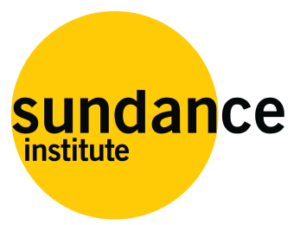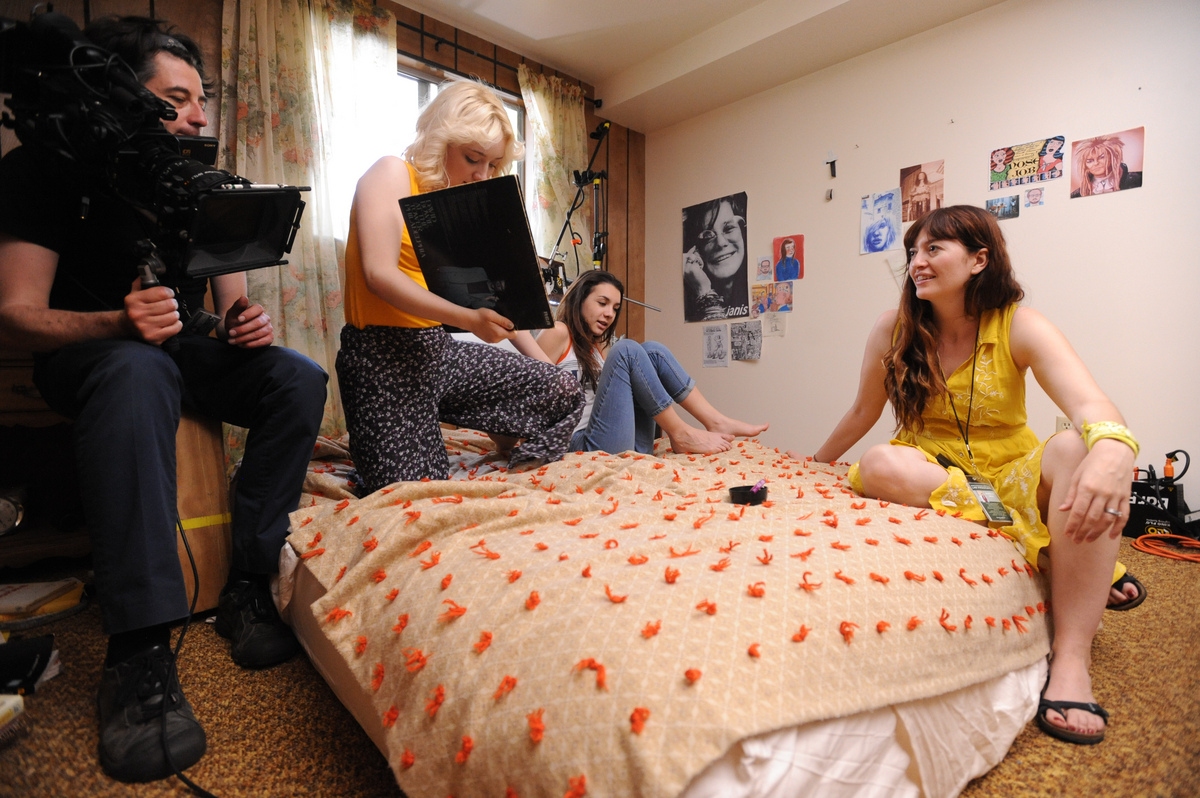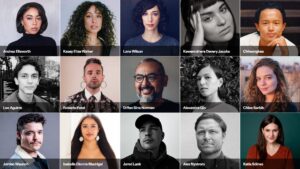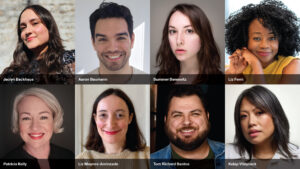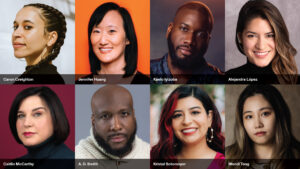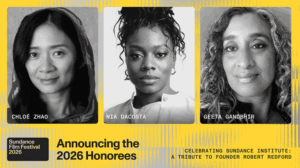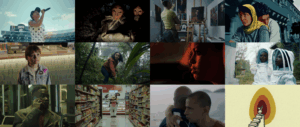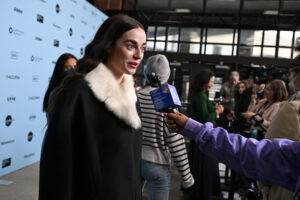Director of photography Benjamin Kasulke, actors Katie Henney and Hannah Marks, and writer-director Marielle Heller at the 2012 Directors Lab. (Photo by Fred Hayes)
By Jessica Herndon
As the Sundance Institute Directors Lab turns 45, we’re celebrating this milestone by highlighting filmmakers who are an integral part of its legacy. Through this special series, we dive deep into the stories of directors who began their narrative feature filmmaking journey at the lab and went on to make an indelible mark on cinema. To ensure future fellows have access to this formative space, we invite you to make a gift and join us as we champion independent voices by keeping the labs alive.
On a sunny Tuesday in early May, Marielle Heller gazes out of her window as memories from the 2012 Directors Lab, where she developed her directorial debut The Diary of a Teenage Girl, come flooding back. She’s just been asked to recall the moment in the lab that changed the trajectory of her film and career. A grin forms across her face as she directs her attention back to her computer to chat via Zoom.
“I have one very clear memory that sticks in my head every time I look at a monitor,” she says warmly, her specs reflecting the light of her screen as her chic eyeglasses chain frames her cheeks and rests on her shoulders near the straps of her mauve tank top. “We were filming a scene from Diary, and there was something I didn’t love that I was seeing on screen, whether it was something in the composition of the shot or maybe it had to do with the lighting, and Gregg Araki said to me, ‘Don’t call action until you love everything you see.’” It was a simple note, she adds, but it lit a fire inside of her.
“Particularly as a woman in the industry, and feeling like I already was insecure about what I didn’t know, that gave me the confidence to be really clear with what I saw, what I wanted, and to not call action until I was satisfied,” she says. “It was sort of this permission granted that I could be really specific about what I wanted and needed. That’s something I’ve taken into my career; I’m very meticulous, and I don’t let little details that bother me go, whether it’s in performances from actors, or costume choices, or how the camera’s moving — if something’s nagging at me, I listen to that voice.”
This voice has contributed to Heller becoming an award-winning filmmaker who draws incredibly nuanced performances from actors, taps into the universal truths in twisted tales, and revels in quiet moments on screen. An undeniably powerful presence on set, when Heller speaks to you, you feel like you’re the only person in the room. Technically, we are. We’re both alone in our home offices, and she’s texted those in her house to ensure no one disturbs her during our chat. But, intimate setting aside, her focus, deep eye contact, and relaxed tone make you feel seen and heard.
Below, we chat with Heller about learning to trust her creative voice, how the 2012 lab set her career in motion, paving the way for a journey that has seen her direct Melissa McCarthy in Can You Ever Forgive Me?, Tom Hanks in A Beautiful Day in the Neighborhood, and Amy Adams in Nightbitch, and how her lab experience gave her a lifelong community among the Sundance Institute, where she’s been a program creative advisor and Sundance Film Festival Dramatic Competition juror.
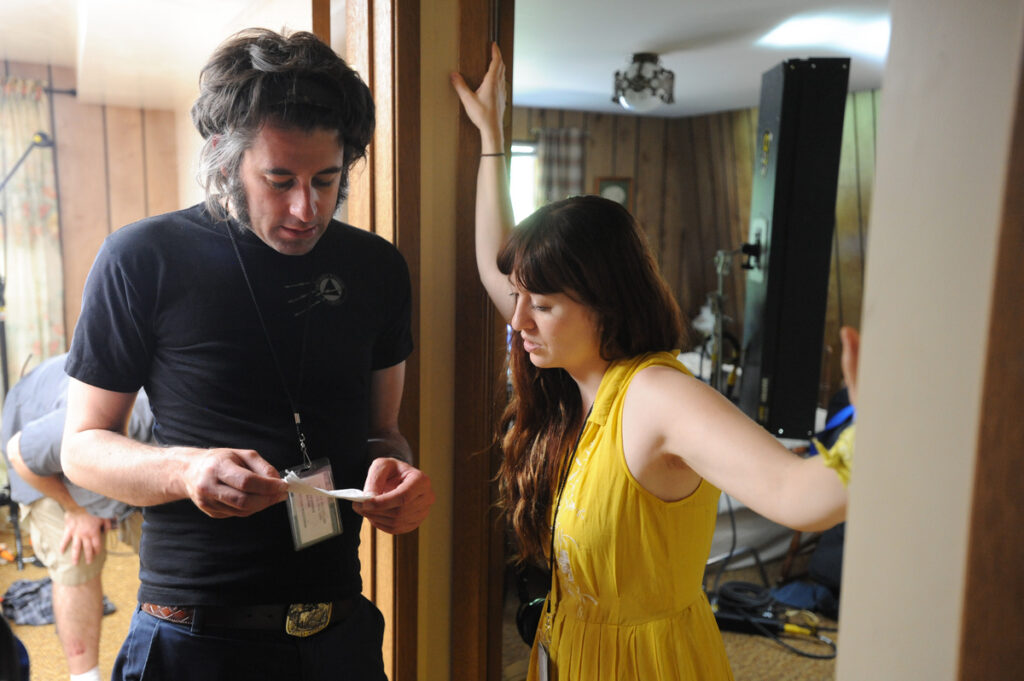
How did the lab help you build confidence in your voice as a director?
I went into the labs feeling like I was this total outsider. There was something about not going to film school; I came from being an actor and had a theater background. I felt so insecure about all of the things that I didn’t know. I expected I would leave the lab still feeling all those insecurities, but instead, I felt like I gained confidence that I had all of these storytelling skills that translated into film. It was just about learning the translation tools. I felt like Sundance was this moment in time that gave me confidence, and all of these tools so that I could take the skills I had and translate them.
And I had this community of people who could help answer any stupid question I might have about filmmaking, which gave me a lot of confidence too. It made me realize that the things I thought were barriers to entry — not understanding lenses, the right way to write a shot list, or how I block a scene — were all skills I could learn.
What was the most valuable lesson you took away from the experience?
The Directors Lab was such a special experience for me because you’re encouraged to take risks and make mistakes. A lot of the days that I learned the most from were the hardest days I had at the lab. There were days when I lost track of my scene or I lost track of what I was working on, and I found myself being pulled, because somebody gave me a suggestion and I thought it sounded good, and it led me down the wrong path instead of trusting my own voice. And I felt like, over and over again, I was reminded of how important it was to know what my intention was when I had written the scene, and to see whether what I was doing was accomplishing what my intention was.
So, it was about tuning into that voice that is my own. And whenever I talk to people who are starting out or making their first film, I say there’s going to be so much that happens every day of filming that distracts you. And it’s not because anyone’s trying to take you off task, but whether it’s costumes, sets, a location issue, or something happening with an actor, all of these things can pull you from your center, and pull you out of your storytelling. You must find ways throughout the day to stay grounded in your voice and intention. I learned how to stay in touch with my voice through the mistakes I made at the Directors Lab.
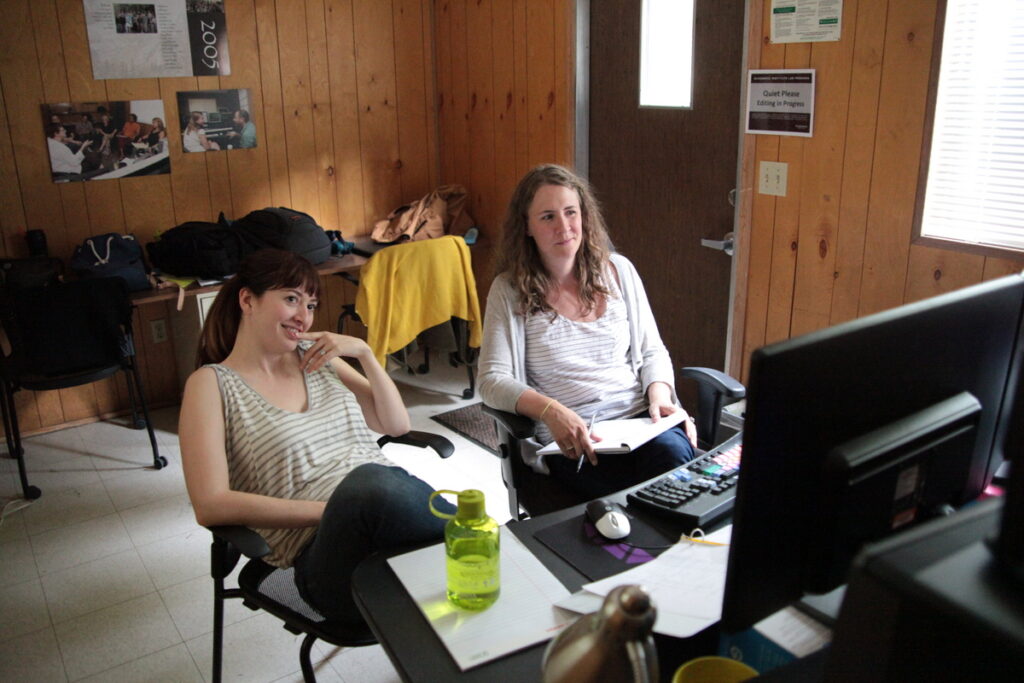
How did the lab shape the way you view your role as a storyteller and director within the broader film industry?
The lab spoiled me, and I can’t even imagine making a movie that doesn’t feel like it’s exactly what it wants to be and is not trying to conform to something. Even when somebody from a studio tells me, “Well, this is how this is supposed to work,” or “These movies need to do this.” I’m like, “Why?” Sundance taught me that there are no rules to this.
Going through the labs gave me that confidence, that firstly, there is no one way to make a movie, that movies get made in so many different ways, and from so many different perspectives, and that anybody who tries to say, “Oh, this is how it’s done. This is how you do X, Y, Z,” doesn’t know what they’re talking about.
But also, it gave me the confidence to recognize how important it was to tell a story from a very individual perspective, instead of trying to please everybody while you tell your story. I’ve moved through the world with confidence because of the lab — knowing there’s a place that accepts, loves, and champions these types of movies has made it so I know I have a place in the world.
Do you feel like the lab was an essential part of your filmmaking journey?
Oh my gosh, absolutely. The lab was this turning point in my life that changed everything. The truth is, I was planning on having kids, and I put everything on hold the moment I got into the lab because I felt like, “Oh, this is what I’ve been working towards. And this is the most important thing that’s happened to me. And now I have to wait.”
Thankfully, that has a happy ending — I got pregnant with my first child right after I filmed my first movie, and my marriage survived that big hiccup. But that’s how important the labs were to me. It was validation, but it was also this opportunity for me to dive in, learn, and explore who I wanted to be as an artist. And I view it as this total turning point of when my career became mine in a real way. It sent me on my momentum journey.
I felt, from the labs, I was just so fired up, ready to go, that essentially, a year and a half after the Directors Lab was when I started filming. And by the time I premiered the movie at 2015 Sundance, my first child was five weeks old. In a funny way, there was something about going to the labs that felt like I was making a decision to protect the artist self that I was before I went on to have a baby.
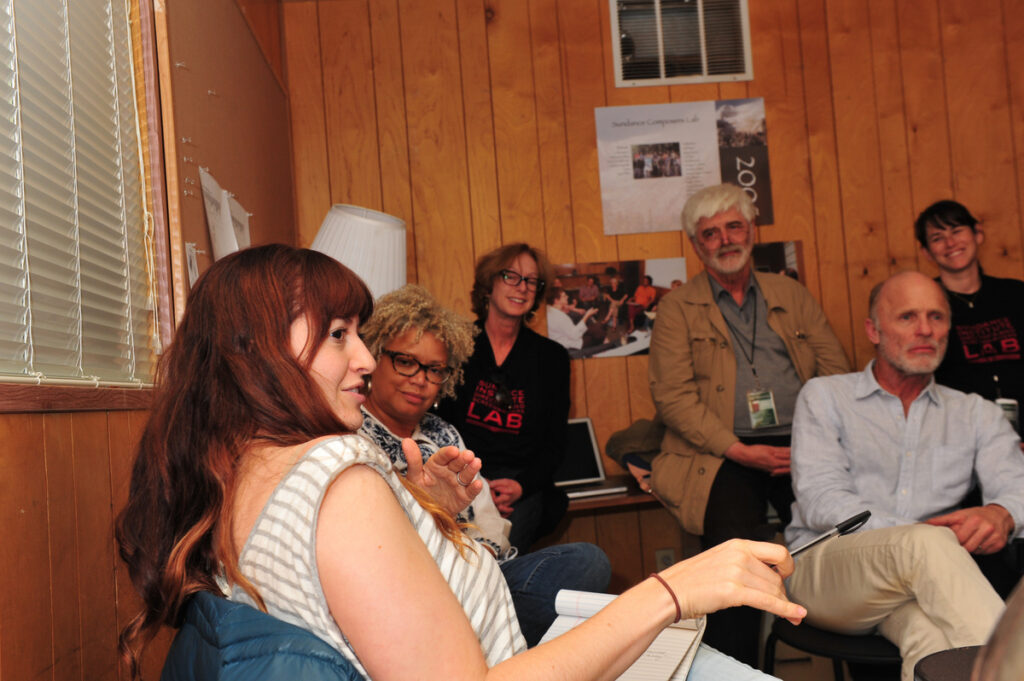
What advice would you give to filmmakers who are hoping to attend the Directors Lab in the future?
The thing about the Directors Lab, like anything in this industry, is that it is what you bring to it. It is a magical, amazing place, but you have to also be at the right point in your life where you’re open and ready for an enormous amount of self-reflection and feedback, and to dig down into who you are as an artist, and try and figure out how to be better. It’s not easy. It’s not something that always feels good, but it ultimately helps us grow.
And what’s so beautiful about Sundance and all of the labs is it’s a community. A lot of being a writer-director or a director is how isolated we are as artists. We tend to work solo. We tend to be alone in our room as writers. As directors, you’re the only director on set, usually. So, having a community becomes so crucial.
I look back at all the people I went through the labs with and view those people as my class. We are a community. We cheer each other on. We check in with each other and talk to each other about our careers. It just means so much to have that in this industry that tends to pit us against each other instead of making us feel like we’re linking arms and building. I appreciate that about the labs.
